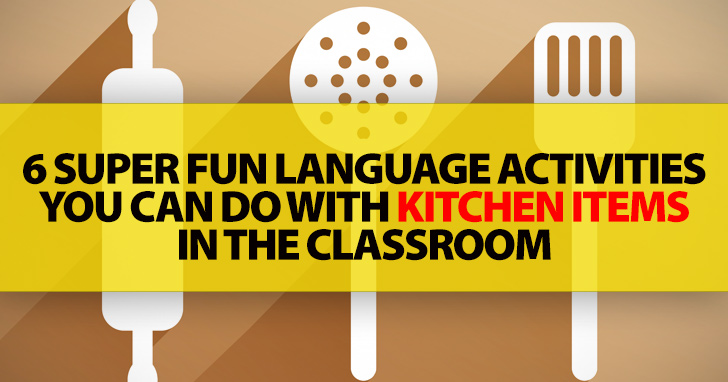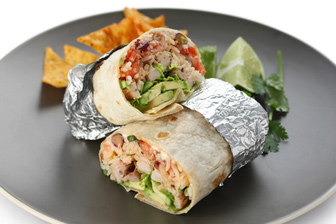6 Super Fun Language Activities You Can Do with Kitchen Items in the Classroom


There are many ways and many reasons to bring fresh flavor to your ESL class through cooking.
Experience a Day in the Life
If your class is reading a novel, short story or other piece of literature together, you may be able to help your students relate to the characters with classroom cooking. Give your students a taste of the fictional character’s life by whipping up a batch of a food mentioned in the text. (For example, Turkish Delight if you are reading The Lion, the Witch and the Wardrobe, fresh maple candy if you are reading Little House in the Big Woods. etc.) There are many resources both in print and online where you can get recipes for unusual foods mentioned in literature. To search simply type the word recipe and then the food you are looking for in your favorite search engine. You are sure to find many options for preparing that food.
Do not limit yourself to literature, either. Even business articles have the potential to include cooking. One of my students’ favorite activities in our unit on businesses that give back was when I brought in a pint of Ben & Jerry’s ice cream for the class to share. Many companies that your students read about every day are related to food. Likewise, there are plenty of geographical locations with food connections. Spice up your classroom style with a taste of something different by bringing those connections into your lesson.
Measurements
Cooking is also a great way to introduce measurements to your students in a way that is realistic and practical. Since most areas of the world use the metric system, this may be the first opportunity your students have had to learn the U.S. measurement system. You can introduce this foreign concept to your students by using familiar food. During your lesson, you can cover typical cooking measurements like cups and teaspoons, but why stop there? Teach pounds and ounces while whipping up a pasta salad. Let your students feel how heavy a pound of cheese is by passing it around (keep it wrapped, please!) before mixing it into a batch of macaroni and cheese. Even if you are teaching with the metric system, your students still need to learn the English vocabulary for those measurements, so let them see and feel how heavy or long or big these measurements are.
Count and Non-Count Nouns
Can you give each student a bread? No, you will have to give them slices of bread, grains of rice or glasses of milk. They can see and feel a cup of coffee, a splash of cream, or a tablespoon of peanut butter. You can give out one banana and one knife to each student. These are just a few of the count and non-count nouns you can cover when the class cooks up a set of peanut butter and banana sandwiches or has a spontaneous coffee house. Food provides a great opportunity to introduce or review the concept of count and non-count nouns since so many food items are non-count. Through cooking, though, you can take a potentially dull and boring topic and make it enjoyable and memorable, and it does not even have to be expensive. If you have no heat sources, make a sandwich (count). If you can get a portable burner or have access to a stove, make bean (count) and cheese (non-count) quesadillas. Even rice pilaf is possible with rice (non-count), veggies (count), and dressing (non-count). Let your creativity flow and give your students a perk in the middle of class.
Class Prepositions
You can use cooking as an opportunity to create or strengthen relationships among your students, too. Tell your students to each bring in a piece of fruit the following day and then surprise them by making fruit salad as a class. You may want to do the cutting yourself to keep things simple and safe (depending on the age of your students), but if you let your students cut up the fruit for the salad, make sure they wash their hands and keep things clean. As you put the different elements in to the bowl together, review prepositions of place. The apples are under the oranges. The banana is on top of the oranges. The oranges are beneath the banana. If you have a glass bowl or use individual clear cups to assemble the salad, your students will be able to see the placement of each type of fruit more easily. The seeds are in the grapes and the pit is out of the peach. As the teacher, try to bring more unusual items or items that are local or culturally unique. Most students will probably bring apples, oranges and bananas. Even if your salad is limited to three or four fruits, once you review the prepositions mix it up with a cup of yogurt (any flavor is okay) and enjoy a snack. Have napkins handy, too.
It All Goes Back to Culture
Most importantly of all, food screams culture. Give your students a chance to talk about their home cultures when they share a food typical of home. This works great as a presentation to the class. It is a perfect opportunity for public speaking when your students demonstrate how to prepare a traditional or typical food, and the smells drifting into the hallway will make students in other classes jealous. Do not stop with a simple presentation, though. Get some writing practice in by having another student retell the process of making a food. You may want to schedule time for pairs of students to interview each other. Students presenting and writing will both have to describe the steps in the procedure and will have to explain the process in chronological order, an important organizational strategy.
You can use cooking in many different ways and for many different purposes. Your students are sure to find it fun and memorable, and you will have a great time, too. Everyone will be walking with a satisfied stomach and a smile on his face.